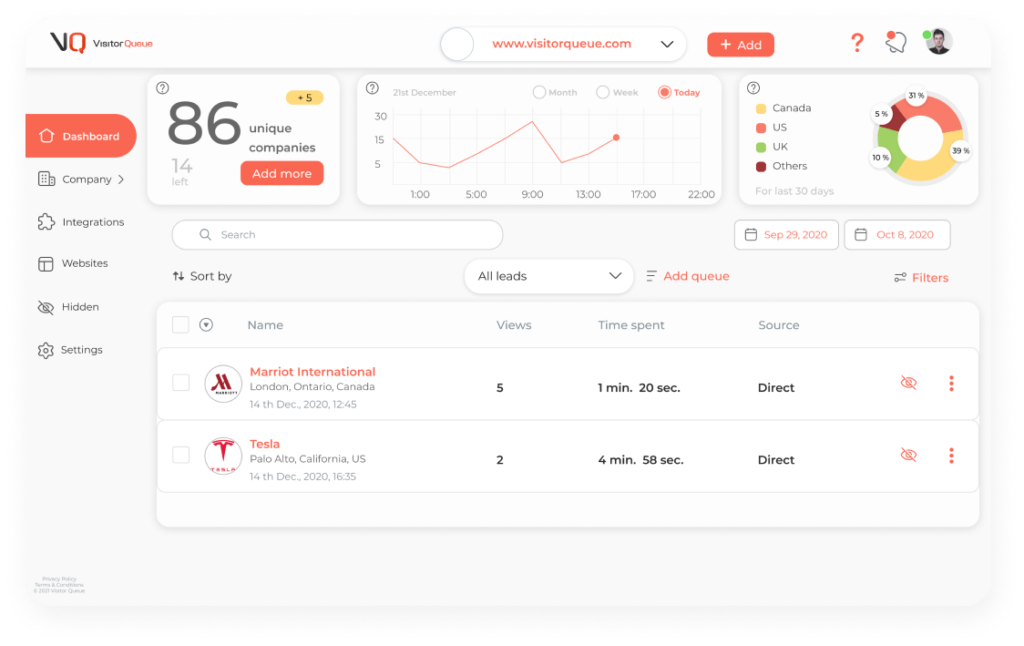As a B2B company, you’re always looking for ways to increase revenue and boost profitability. But, we all know that it’s not as easy as it seems to do this. That’s why so many companies are trying to focus on a profitable growth strategy and how to implement it in their own way. But what exactly is profitable growth, and how can you achieve it?
Well, What is Profitable Growth?
By definition, profitable growth refers to the process of increasing revenue while also maintaining or improving profit margins. This can be achieved by increasing the price of your product or service, improving efficiency, reducing costs, or a combination of these factors. How you build this strategy will depend on your specific company, industry, and competitors. So, keep this in mind when we go through the following steps on how to accomplish profitable growth. Now that you know what profitable growth is, let’s go over the top tips and tricks on how to attain it.
Focus on Customer Acquisition
One of the most effective ways to achieve profitable growth is to focus on customer acquisition and lead generation strategies. By targeting the right audience and developing effective marketing campaigns, you can attract high-quality and relevant prospects who are likely to convert into paying customers. In turn, increase your revenue. If you are stuck doing the same marketing tactics, it can be helpful to try something new. Especially if you are looking to increase the number of leads that you can generate.
Optimize Your Pricing Strategy
Price can be a tricky factor when it comes to profitable growth. You want to ensure that your company stays competitive yet enticing. By optimizing your pricing strategy, you can increase revenue without sacrificing profit margins. This could involve increasing your prices or offering discounts or promotions to encourage prospects that are on the fence. As an example, in your email onboarding sequence, if someone does not convert after your free trial, you can offer them a 15% lifetime discount on their subscription. So, you won’t lose the sale entirely. It’s important to regularly review your pricing strategy to ensure it’s still aligned with your business strategy and revenue.
Automate, Automate, Automate
There is no point in wasting time and money manually completing tasks. In this day in age, when we have so much technology available at our fingertips, there is no reason why tasks are not automated. Additionally, automating tedious tasks can reduce human errors that are inevitable. Software like Zapier makes it very easy to connect two or more applications together so you don’t have to manually complete these tasks anymore. Data input, CRM management, emails, and task management are just a few examples of tasks that can be automated.
Expand Your Product or Service Offerings
Another way that you can enhance your profitable growth strategy is to expand your product or service offerings. By offering new products or services to your existing customers, you can increase revenue without significantly increasing costs. As an example, if you create a new integration, you can offer it to your clients for an additional fee. Ensure you prove how this new integration will enhance their experience and make it well worth their investment. In addition, adding new features might attract new market segments, which can allow you to tap into new sources of revenue.

Know Your Metrics
Just like any other form of marketing, you’ll want to know what metrics to track. Knowing your metrics and how to calculate them can help you keep track of where your company stands and ensure that you are making the right decisions. Below are a handful of marketing metrics that you should track when you are focusing on profitable growth. If you are looking for a more complete list of metrics, take a look at this article.
Profit Margins
I’ve mentioned profit margins a few times throughout this article already. Profit margin refers to the amount of profit earned on each dollar of revenue generated. Essentially, it represents the percentage of revenue that remains after deducting all costs associated with producing and delivering your product. This could include labor, overhead expenses, and marketing expenses. A high profit margin may be a sign that you have a strong competitive advantage over similar companies in the industry. Margins can get a little tricky to calculate, so here is a margin calculator that may help.
Customer Acquisition Cost
The next metric on our list is customer acquisition cost. This metric refers to how much it costs your company to acquire a new customer. Marketing expenses, salaries, and other costs may go into this number. To start, you’ll want to calculate how much you spent on these various marketing expenses in a given time period. Then, figure out how many new customers you acquired in that same time period. Once you have these two numbers, simply divide them. For example, if you spent $20,000 in Q1, and acquired 150 new clients, then your customer acquisition cost would be $133.33 per customer in Q1.
Year over Year Growth
Year over year growth is an important metric for companies to track because it provides insight into a company’s overall health and trajectory. By comparing finacial performance from one year to the next, busiensses can identify trends, measure progress, set attainable goals, and make data-driven decisions. Oftentimes year over year growth is a key indicator of a company’s ability to generate value in its industry. Keep in mind that it’s also important to track your yearly expenses alongside growth.

Embrace Tech
One of the best ways to grow your company is to take advantage of what technology has to offer. Whether you are looking to automate tasks, generate leads, manage leads, or track projects, software is a great addition to your team. Here are some of my favorite software for companies of all sizes to take advantage of.
A CRM
A CRM software, like Hubspot, Salesforce, Keap CRM, or Agile CRM, can help organize and manage customer information in one location. This makes it easier for your team to access and update customer information. In addition, a CRM software can automate certain tasks, like sending follow up emails, scheduling appointments, and generating analytic reports, which can save your team a lot of time. They can then use this time to focus on other tasks that cannot be automated. Not to mention that a CRM can help you increase customer satisfaction and retention, which is always a win! Without a doubt, a CRM is the most important software that you can use if you want to focus on profitable growth.
Visitor Queue
The first step on this list was to focus on customer acquisition. That’s where Visitor Queue comes in. Visitor Queue is a B2B lead generation and website personalization software that can identify the anonymous companies that are on your website. From there, you can gain information on how they were acquired, what pages they viewed, and how long they spent on each page. This will help you qualify them as a lead and see what they are interested in.
Plus, we provide employee contact information including email addresses, phone numbers, and LinkedIn pages to help you reach out to key employees. If a company is already on your website, they will likely be interested in what you have to offer, they just may have a question before they decide. Paid plans start at just $31 USD per month, so it can easily fit into your profitable growth strategy. Start your 14-day free trial of Visitor Queue today so you can stop losing leads.

Trello
Trello is a project management software that can keep your team on the same page and working on the correct tasks. A project management software is extremely helpful at ensuring your teams know what they should be doing at all times, and how their tasks help accomplish the bigger picture. This is especially important when you are considering profitable growth, as you should always try to be bigger and better than before.
Be Aware of Your Competitors
A competitive advantage is everything. It’s what sets you apart from every other software on the market. And, it can be the driving factor of a prospect choosing your company over a competitor. Check in on your competitors on a regular basis, at least once a month, to see what they are up to. Look at their website including features and pricing pages, social media channels, review sites, or even subscribe to their newsletter with a non-work email. These are the places where you will see if they introduce a new feature, if their clients are happy, or if they have pricing changes. It can be helpful to keep a Google Sheet of all of your competitor’s social links, website links, pricing, etc so you know if anything changes along the way.
Final Words
Profitable growth is the key to long-term success for B2B companies. By focusing on increasing revenue and controlling costs, a business can focus on sustainable growth. Like we discussed earlier, achieving a profitable growth strategy requires careful planning, innovation, and a strong focus on customer satisfaction. By following the strategies and tips mentioned in this article, your company can set itself up for success. As always, if you have any questions about how your company can use Visitor Queue to increase revenue, don’t hesitate to reach out.
 Identify
Identify Personalize
Personalize Benchmark
Benchmark Agencies
Agencies Integrations
Integrations Case Studies
Case Studies Use Cases
Use Cases Blog
Blog Resources
Resources









